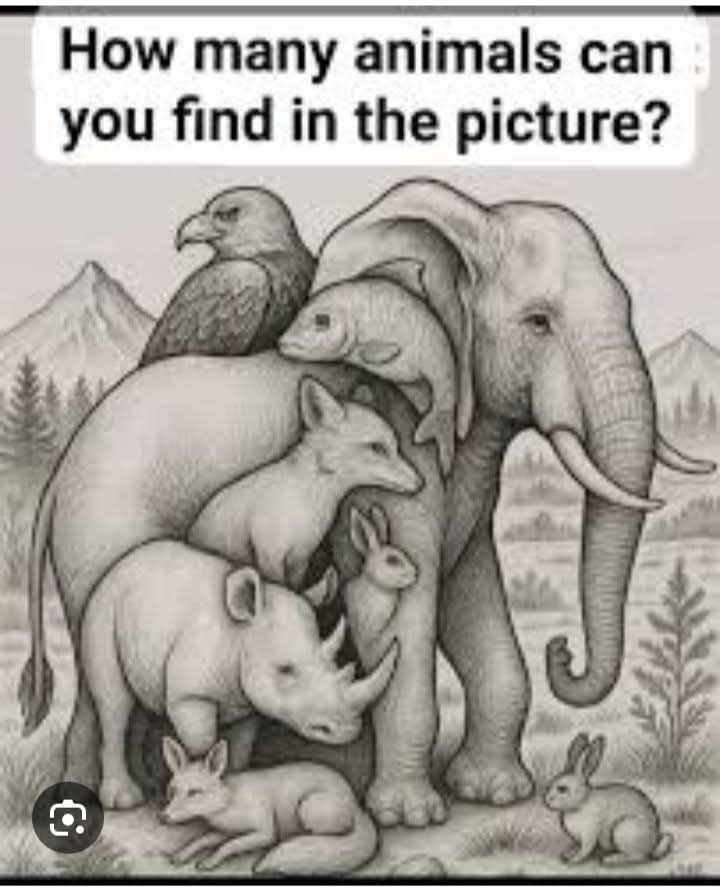🧠 The Art of Visual Perception: Decoding Hidden Animals in Illustrative Puzzles
In the realm of cognitive engagement and artistic creativity, visual puzzles have long served as a bridge between entertainment and mental stimulation. One particularly captivating example is the composite illustration that challenges viewers to identify multiple animals cleverly embedded within the outline of a single elephant. This type of artwork not only entertains but also exercises the brain’s ability to detect patterns, interpret shapes, and engage in abstract thinking.
🎨 The Power of Composite Imagery
Composite illustrations are designed to layer multiple visual elements into a single cohesive image. In this case, the central figure—a large elephant—serves as the canvas for a hidden menagerie of animals, including birds, mammals, reptiles, and amphibians. The artist’s use of negative space, contour blending, and strategic placement allows each animal to emerge subtly, rewarding viewers who look beyond the obvious.
🧩 Cognitive Benefits of Visual Puzzles
Engaging with such puzzles offers several cognitive advantages:
- Enhanced Visual Discrimination: Training the brain to distinguish subtle differences in shape and texture.
- Improved Attention to Detail: Encouraging sustained focus and careful observation.
- Pattern Recognition: Strengthening the ability to identify familiar forms within complex environments.
- Creative Thinking: Stimulating imagination by challenging conventional visual interpretation.
Pages: 1 2

